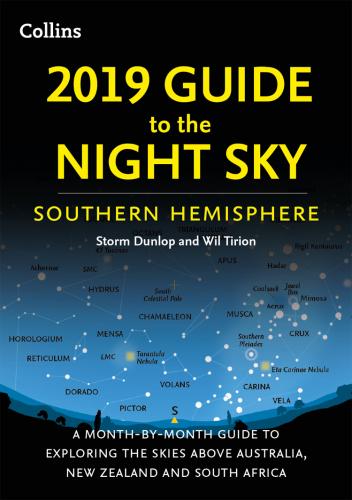Superior planet.
Although the positions of the various shower radiants are shown on the charts, looking directly at the radiant is not the most effective way of seeing meteors. They are most likely to be noticed if one is looking about 40–45° away from the radiant position. (This is approximately two hand-spans as shown in the diagram for measuring angles.)
Other objects
Certain other objects may be seen with the naked eye under good conditions. Some were given names in antiquity – Praesepe is one example – but many are known by what are called ‘Messier numbers’, the numbers in a catalogue of nebulous objects compiled by Charles Messier in the late eighteenth century. Some, such as the Andromeda Galaxy, M31, and the Orion Nebula, M42, may be seen by the naked eye, but all those given in the list will benefit from the use of binoculars. Apart from galaxies, such as M31, which contain thousands of millions of stars, there are also two types of cluster: open clusters, such as M45, the Pleiades, which may consist of a few dozen to some hundreds of stars; and globular clusters, such as Omega Centauri, which are spherical concentrations of many thousands of stars. One or two gaseous nebulae (emission nebulae), consisting of gas illuminated by stars within them, are also visible. The Orion Nebula, M42, is one, and is illuminated by the group of four stars, known as the Trapezium, which may be seen within it by using a good pair of binoculars.
Meteor shower (showing the Geminids radiant).
Measuring angles in the sky.
Some interesting objects.
| Messier / NGC | Name | Type | Constellation | Maps (months) |
| — | 47 Tucanae | globular cluster | Tucana | All year |
| — | Hyades | open cluster | Taurus | Sep. – Apr. |
| — | Melotte 111 (Coma Cluster) | open cluster | Coma Berenices | Jan. – Aug. |
| M3 | — | globular cluster | Canes Venatici | Jan. – Sep. |
| M4 | — | globular cluster | Scorpius | May – Aug. |
| M8 | Lagoon Nebula | gaseous nebula | Sagittarius | Jun. – Sep. |
| M11 | Wild Duck Cluster | open cluster | Scutum | May – Oct. |
| M13 | Hercules Cluster | globular cluster | Hercules | Feb. – Nov. |
| M15 | — | globular cluster | Pegasus | Jun. – Dec. |
| M22 | — | globular cluster | Sagittarius | Jun. – Sep. |
| M27 | Dumbbell Nebula | planetary nebula | Vulpecula | May – Dec. |
| M31 | Andromeda Galaxy | galaxy | Andromeda | All year |
| M35 | — | open cluster | Gemini | Oct. – May |
| M42 | Orion Nebula | gaseous nebula | Orion | Nov. – Mar. |
| M44 | Praesepe | open cluster | Cancer | Nov. – Jun. |
| M45 | Pleiades | open cluster | Taurus | Aug. – Apr. |
| M57 | Ring Nebula | planetary nebula | Lyra | Apr. – Dec. |
| M67 | — | open cluster | Cancer | Dec. – May |
| IC 2602 | Southern Pleiades | open cluster | Carina | Nov. – Aug. |
| NGC 2070 | Tarantula Nebula | emission nebula | Dorado (LMC) | All year |
| NGC 3242 | Ghost of Jupiter | planetary nebula | Hydra | Feb. – May |
|
|
